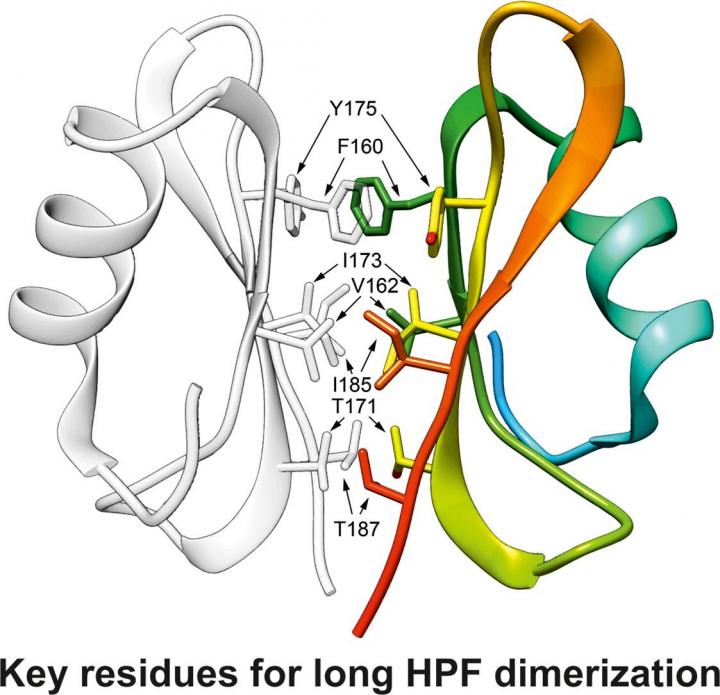Solution of the high-resolution crystal structure of stress proteins from Staphylococcus

Credit: Kazan Federal University
Project leader, Head of Structural Biology Lab Konstantin Usachev explains, “One of the main factors favoring a microorganism's survival in extreme conditions is preserving ribosomes – a macromolecular complex comprising RNA and proteins.
For this purpose, a cell synthesizes special proteins which may stop translating ribosomes until the stress is over. One of such proteins is hibernation promoting factor (HPF) which transfers ribosomes to the 'hibernation state'.”
Staphylococcus aureus is one of the most dangerous bacteria for humans, a pathogen causing many nosocomial infections. The danger is both in the staph's virulence and antibiotic resistance. There are currently no specific anti-staphylococcus antibiotics. That's why it's so important to seek new targets for antibiotic therapy in the bacteria.
“Using high-resolution (1,6 Å) X-ray structure analysis, we solved the structure of the domain of HPF from Staphylococcus aureus, which regulates the dimerization of ribosomes and keeps in their 'hibernation state'.
Based on the obtained information, we found the key amino acid residues which provide for the functioning of the protein and used genetic engineering to produce mutated forms of this protein by single amino acid residues substitutions. After that, the mutated forms were analyzed for their capabilities of ribosome hibernation, and we found five residues essential for the functioning of the protein.
Our results open the way to exploring new compounds that could bond with this protein areas and decrease the vitality of Staphylococcus aureus under stress,” adds Dr. Usachev.
This was the first protein structure solved by X-ray analysis implemented with the new XtaLab Synergy S diffractometer; it was installed at the Structural Biology Lab this past May.
“Our new diffractometer has a sensitive detector, which allows analyzing the structure of large biomolecules in a monocrystal form, such as proteins and nucleic acids,” concludes Dr. Usachev.
###
The Structural Biology Lab currently cooperates with the Chemoinformatics and Molecular Modelling Lab in searching the databases for new compounds which can bind with the Staph stress proteins.
Media Contact
All latest news from the category: Life Sciences and Chemistry
Articles and reports from the Life Sciences and chemistry area deal with applied and basic research into modern biology, chemistry and human medicine.
Valuable information can be found on a range of life sciences fields including bacteriology, biochemistry, bionics, bioinformatics, biophysics, biotechnology, genetics, geobotany, human biology, marine biology, microbiology, molecular biology, cellular biology, zoology, bioinorganic chemistry, microchemistry and environmental chemistry.
Newest articles

Bringing bio-inspired robots to life
Nebraska researcher Eric Markvicka gets NSF CAREER Award to pursue manufacture of novel materials for soft robotics and stretchable electronics. Engineers are increasingly eager to develop robots that mimic the…

Bella moths use poison to attract mates
Scientists are closer to finding out how. Pyrrolizidine alkaloids are as bitter and toxic as they are hard to pronounce. They’re produced by several different types of plants and are…

AI tool creates ‘synthetic’ images of cells
…for enhanced microscopy analysis. Observing individual cells through microscopes can reveal a range of important cell biological phenomena that frequently play a role in human diseases, but the process of…





















